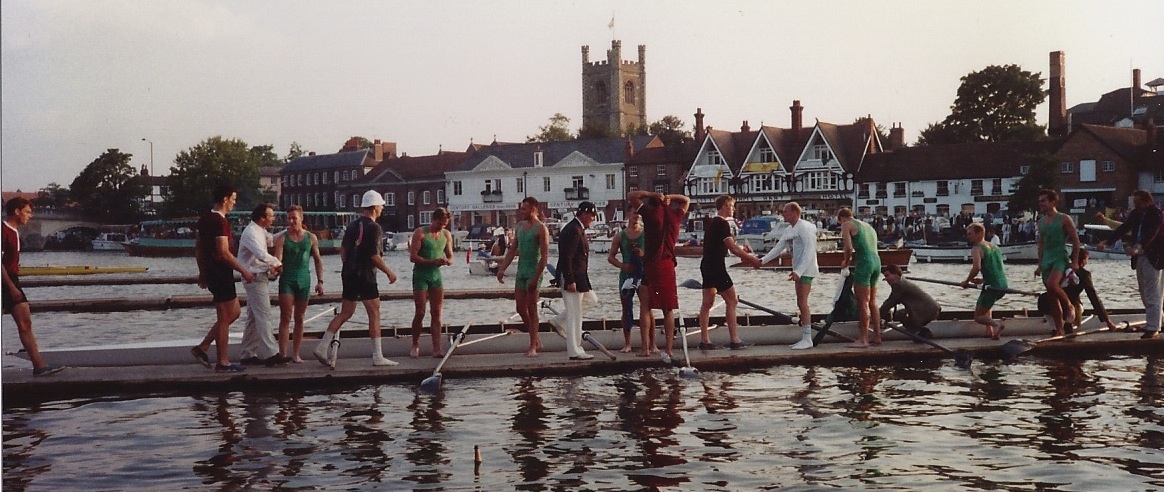The ‘towns on route’ have been announced and 6800 torch bearers have been unveiled. The complex planning process for the 2012 London Olympic and Paralympic Torch Relays is entering its final stages. Over the next couple of months, the planning team must agree the street-level routes with local authorities across the country. But will the organisers miss the chance to create a legacy that would benefit the nation’s tourism industry beyond 2012?
The curtain-raiser to the Olympics since the infamous Berlin Games of 1936, the Olympic Torch Relay was transformed into a major sponsorship property by the Los Angeles Organising Committee in 1984. LA’s controversial ‘Youth Legacy Kilometer’ initiative also pioneered the idea of torch-bearers being nominated by the public: nominations were invited from individuals or companies who made a $3,000 donation to a special youth sport fund. Since LA, the fund-raising element has been dropped but the operational model, with incremental refinements, has been passed on in relay from one Games to the next.
LOCOG first outlined its vision for the Relay to “connect people to the Olympic Games, its heroes and its spirit,” in May 2010. “The Olympic Torch Relay will bring the 2012 Games to people’s doorsteps and showcase the best of the UK from dynamic urban areas to places of outstanding natural beauty and sporting and cultural landmarks.” To their credit, the LOCOG planning team appears to have bettered its initial target of the Relay route passing “within a one hour journey time” of 95% of the British population.
LOCOG’s initial Relay announcement bore an almost uncanny resemblance to the equivalent announcements from Vancouver, Beijing, Turin, Athens, Salt Lake and Sydney and even the Commonwealth Games Baton Relays of Delhi, Melbourne and Manchester. Strict observance of the established operational model appears to be stifling originality to the extent that sporting relays have become formulaic.
In their efforts to capture the public imagination and differentiate one Relay from the next, recent organisers have resorted to uplifting taglines. The invitation to “Light the Passion, Share the Dream“, was possibly misconstrued by the demonstrators that were attracted to various international legs of Beijing’s relay. London positions the Relay as “A moment to shine”.
Sadly, LOCOG appears to be in danger missing a trick. Britain’s unique sporting heritage gives LOCOG the opportunity to give the 2012 Relay a very distinctive feel and re-connect it, and the watching public, with the origins of many modern sports.
History is important to the International Olympic Committee. The Olympic Museum in Lausanne is currently the only permanent publicly accessible manifestation of the Olympic Movement. It is in the midst of a £30 million refurbishment.
DeCoubertin, who was inspired to re-establish the Olympics by William Penny Brookes, an octogenarian GP from Much Wenlock in Shropshire, once said that “holding an Olympic Games means evoking history”.
It is the century of iconic sporting moments and the spirits of athletes like Spiridon Louis, Dorando Pietri, Harold Abrahams, Jessie Owens, Fanny Blankers-Koen, Ogla Korbut, Mark Spitz, Kathy Freeman, Steve Redgrave that underpin and sustain the Olympic brand. It’s the heritage that keep the IOC’s corporate sponsors and the world’s media coming back for more, decade after decade.
Without this heritage, a latter-day de Coubertin would find it impossible to persuade a single country, let alone a single city, to invest the billions required to host simultaneous world championships for so many different sports.
When inviting the world’s athletes to come to London during the Year-to-Go celebrations in Trafalgar Square on 27 July, IOC President Jacques Rogge talked of the Games “coming to the nation that invented modern sport and the concept of fair play.”
The IOC website acknowledges how Britain created, codified or popularised 15 out of the 25 current summer Olympic sports. Thanks to Scotland’s role as the home of both golf and rugby sevens, the tally will rise to 17 at Rio 2016. It’s an unfortunate oversight that the Relay route bypasses the birthplace of sevens at Melrose.
In recent years, history has been out of fashion within Britain’s educational establishment. In spite of this, the subject has remained popular with the public and continues to attract respectable audiences on television, even in our multi-channel age. Television historians have been elevated into the ranks of celebrity. Given the chance, history can still engage and excite school children – especially when there are local and sporting dimensions.
The final presentations to the 2005 Olympic Congress that secured the Games for London were littered with references to Britain’s sporting and Olympic pedigrees. However, LOCOG’s enthusiasm for history appears to have waned.
Yes, LOCOG did name their official mascots after the aforementioned Much Wenlock and the Buckinghamshire birthplace of Paralympic sport at Stoke Mandeville. But, beyond including these two towns and a handful of other sporting venues in the Relay, references to sporting heritage have largely disappeared from more recent Relay announcements. The only reference to “heritage” in the towns-on-route announcement relates to one of the presenting partners.
While retaining the ambition to make the 2012 Games themselves “historic”, LOCOG has placed modernity at the heart of its brand values. Unfortunately, to its international audiences, “modern London” has taken on new meaning since the summer riots of 2011.
Places all over the country have significant associations with the development of sport. Incorporating just a selection of these places into the detailed street-level route could provide a narrative thread running through the 2012 Torch Relay that would demonstrate to the nation and the wider world how deeply sport is embedded into the DNA and landscape of these islands.
This needn’t be chauvinistic. The Relay provides a unique opportunity to celebrate the places all over the country and the diverse, if sometimes flawed, characters that helped shape world sport. A deeper understanding of our own sporting heritage would help prevent future embarrassments like the FA’s failed World Cup bid.
Examples are many, varied and often surprising. The magnificently named Major Walter Clopton Wingfield reputedly demonstrated lawn tennis for the first time at Nantclwyd Hall near Wrexham. John Graham Chambers, who drew up boxing’s Queensbury Rules, and was the driving force behind the first national championships in modern athletics, was born in Llanelli. Matthew Webb, the man who arguably did more to popularise swimming than any other person by conquering the English Channel unaided, was born in Dawley, just a few miles from Much Wenlock. He learned to swim in the River Severn in the shadow of the famous Ironbridge.
Charles Alcock who conceived the FA Cup and international football and also hosted the original Ashes cricket test match in his capacity as secretary of Surrey CCC, was born in Sunderland.
The story of Harry Clasper challenges the stereotypical perception of rowing as the preserve of public schools, Oxbridge and the Thames. At different times a miner, ships carpenter, wherryman and publican, Clasper became a folk hero on the Tyne racing against professional watermen from the capital. He also revolutionised racing boat design, introducing keel-less hulls and outriggers – the forerunners of the boats that will race at Eton next year. More than 100,000 Geordies are reported to have turned-out for his funeral in 1870.
The Sydney 2000 Olympic Torch Relay was instrumental in transforming scepticism among Australians outside the host city into widespread enthusiasm nationwide. In Britain, many who live outside the M25 tire of the continual, often subliminal, assertions of the cultural and economic superiority of London. Actively celebrating the sporting contributions of the communities along its route could help protect the Relay and the Games from such cynicism.
It’s also a sad reality that Torch Relays rarely generate much media coverage outside the host nation. The exceptions are as they enter the host city towards the end of their journeys or when they attract protesters.
As the 2012 Relay unfolds, a hundred or more overseas teams will be arriving in the UK for pre-Games training camps. Involving some of these visiting athletes as torch bearers at landmarks associated with their own sports would give the international media the stories that would justify covering the event. When even the Economist is questioning the tourism benefits of the Games, extending the world’s gaze beyond London could help transform the nation’s sporting heritage into a lasting sports tourism legacy that benefits the whole country.
In her 2011 RTS Huw Weldon Lecture, Bettany Hughes said, “It is the purpose of history to allow us to look confidently into the future.” Her observation that “History is essential to nourish the next generation,” echoed the aspirations that Seb Coe had for sport when he addressed the IOC in Singapore in 2005. Reconnecting the British people with their own local sporting heritage could give a boost to another struggling 2012 legacy programme by inspiring more people to take up sport themselves.
LOCOG’s own campaign to encourage the public to nominate unsung heroes as torch bearers was branded “Moment to Shine”. London 2012 still has the opportunity to give Britain’s unique and fascinating sporting heritage its own moment to shine.



